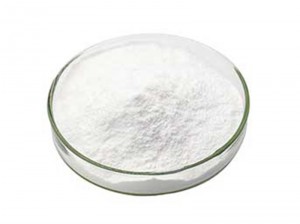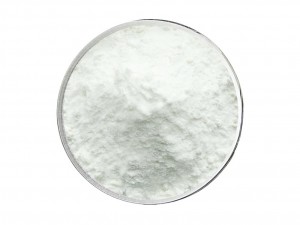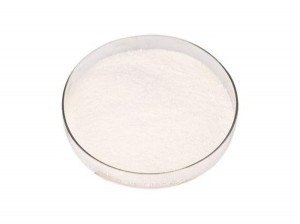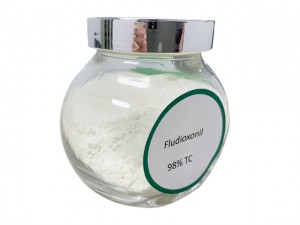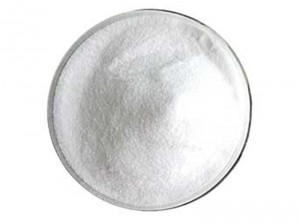Triadimefon
Triadimefon, Technical, Tech, 95% TC, 96% TC, 97% TC, Pesticide & Fungicide
Specification
| Common Name | Triadimefon |
| IUPAC Name | 1-(4-chlorophenoxy)-3,3-dimethyl-1-(1H-1,2,4-triazol-1-yl)butan-2-one |
| Chemical Name | 1-(4-chlorophenoxy)-3,3-dimethyl-1-(1H-1,2,4-triazol-1-yl)-2-butanone |
| CAS No. | 43121-43-3 |
| Molecular Formula | C14H16ClN3O2 |
| Molecular Weight | 293.749 |
| Molecular Structure | 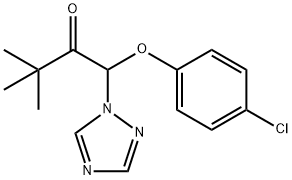 |
| Specification | Triadimefon, 95% TC, 96% TC, 97% TC |
| Form | Off-white crystalline powder |
| Melting Point | Modification 1:78℃, Modification 2:82℃ |
| Density | 1.283 (21.5℃) |
| Solubility | In water 64 mg/L (20℃). Moderately soluble in most organic solvents except aliphatics. In Ddichloromethane, in Ttoluene >200, in Isopropanol 99, in Hexane 6.3 (all in g/L, 20℃). |
| Stability | Stable to hydrolysis, DT50 (22℃) >1 y (pH 3, 6, and 9). |
Product Description
Triadimefon is a kind of Triazole fungicide with high efficiency, low toxicity, low residue, long duration and strong internal absorbability. Absorbed by the various parts of the plant, it can be transmitted within the plant body. It has the functions of prevention, eradication, treatment and fumigation for wheat rust and powdery mildew. It is effective to a variety of crop diseases such as corn round spot, wheat Moire, wheat leaf blight, pineapple black rot and maize head smut. The treatment of wheat smut, melon, fruit tree, vegetable, flower and other powdery mildew are highly effective.Safer for fish and birds. Harmless to bees and predators.
● Biochemistry:
Steroid demethylation (ergosterol biosynthesis) inhibitor.
● Mode of action:
Systemic fungicide with protective, curative and eradicant action. Absorbed by the roots and leaves, with ready translocation in young growing tissues, but less ready translocation in older, woody tissues.
The bactericidal mechanism of Triadimefon is very complicated, which mainly inhibits the production of Ergosterol, thus inhibiting or interfering the development of attached spores and Haustoria, the growth of Hypha and the formation of spores. Triadimefon is highly active against some pathogens in Vivo, but its effect in vitro is poor. Better for mycelium than for spores. Triadimefon can be mixed with many fungicides, insecticides, herbicides and so on.
● Uses:
Control of powdery mildews in cereals, pome fruit, stone fruit, berry fruit, vines, hops, cucurbits, tomatoes, vegetables, sugar beet, mangoes, ornamentals, turf, flowers, shrubs and trees; rusts in cereals, pines, coffee, seed grasses, turf, flowers, shrubs and trees; Monilinia spp. in stone fruit; black rot of grapes; leaf blotch, leaf spot, and snow mould in cereals; pineapple disease butt rot in pineapples and sugar cane; leaf spots and flower blights in flowers, shrubs and trees; and many other diseases of turf. Phytotoxicity: Ornamentals may be damaged if used at excessive rates.
● Compatibility:
Compatible with WP formulations of other pesticides.
● Packing in 25KG / Drum



